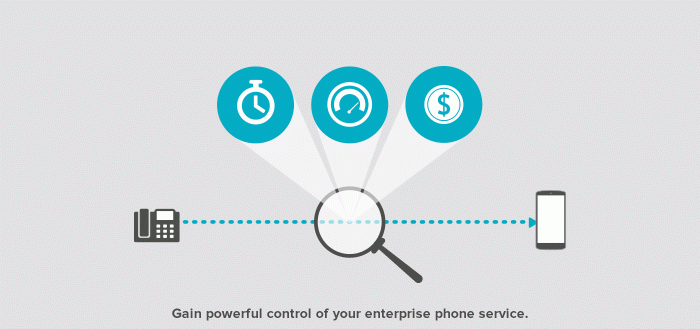Data rules the world. Numbers factor heavily in every major (and minor) business decision. As more and more of what we do shifts onto the digital plane, numbers are increasingly available and we’d be fools not to use them. With the advent of IP telephony, in particular SIP trunking, the phone usage tracking tools previously reserved for carriers and subpoena wielding law enforcement officers are now available to everyone. With these tools, you can gain powerful insight into your enterprise telephone usage.
Account intelligence:
In another post, I focused on the accounting benefit of assigning X-tags, customizable labels that categorize call data, to your calls. Call Detail Records (CDRs) contain all the data generated for each SIP communication on your account, delivering powerful analytics. In this post, I explain how CDRs can protect your company balance and provide the intelligence you need to fully manage your phone system.
CDRs contain a wealth of information about your communications. Historically the use of that information has been limited to carriers for use in compiling your monthly bill and for law enforcement to analyze the communications of suspected criminals, tracking movements and establish relationships.
These call statistics paint a finely detailed picture of usage from an individual and departmental perspective. Real-time CDRs are integral to responsive control of your phone service like live capacity management and workforce optimization. And responsive control of your phone service is crucial to the management of your business communications.
CDRs are easily uploaded to your data analytics tools of choice, which means you can manipulate the numbers in an almost infinite number of ways. With the reports and charts you generate, management of your phone system becomes simple, easy, and effective. At that point, communications become a powerful element in your business intelligence strategies.
CDRs in practice:
- To-the-minute accounting of usage for cost tracking.
- Determine the billing method most appropriate for your usage.
- Bill reconciliation.
- Track inbound bursts resulting from marketing campaigns.
- Understand how much capacity and agent coverage you need when.
- Diagnose problems such as bad Caller-ID configurations, call loops, unexpected failover, broken SIP ALG or IP configurations, and more.
CDRs vs CDRs:
Access to your call details puts you in control. And to have responsive control, you need your CDRs to be as close real-time as possible with a rich amount of data. How much data you get, and how up-to-date your data is, depends on your service provider.
Traditional CDRs were limited to basic caller and receiving party IDs as well as call time and duration. More modern platforms will deliver additional information, such as call patterns and destination country, and give you the filtering ability to dig deeply and precisely into the data.
The issue is, not all providers provide the same level of data and filtering. When you’re trialing providers, use their CDR panel to run reports. Are they filterable? If so, how robust is filtering? Useful filters beyond start and end dates, and duration, are cost, destination country, and call pattern.
The start of something powerful:
CDRs as a component of your SIP trunking command center lay the foundation for detailed control of your enterprise phone system. With the right provider, you gain the flexibility to execute on the insight CDR intelligence delivers in real-time. When you have truly responsive control of your phone lines, you can reactively troubleshoot bursting, connection loss, or audio issues standing between your enterprise and a strong, always available connection to the PSTN.







